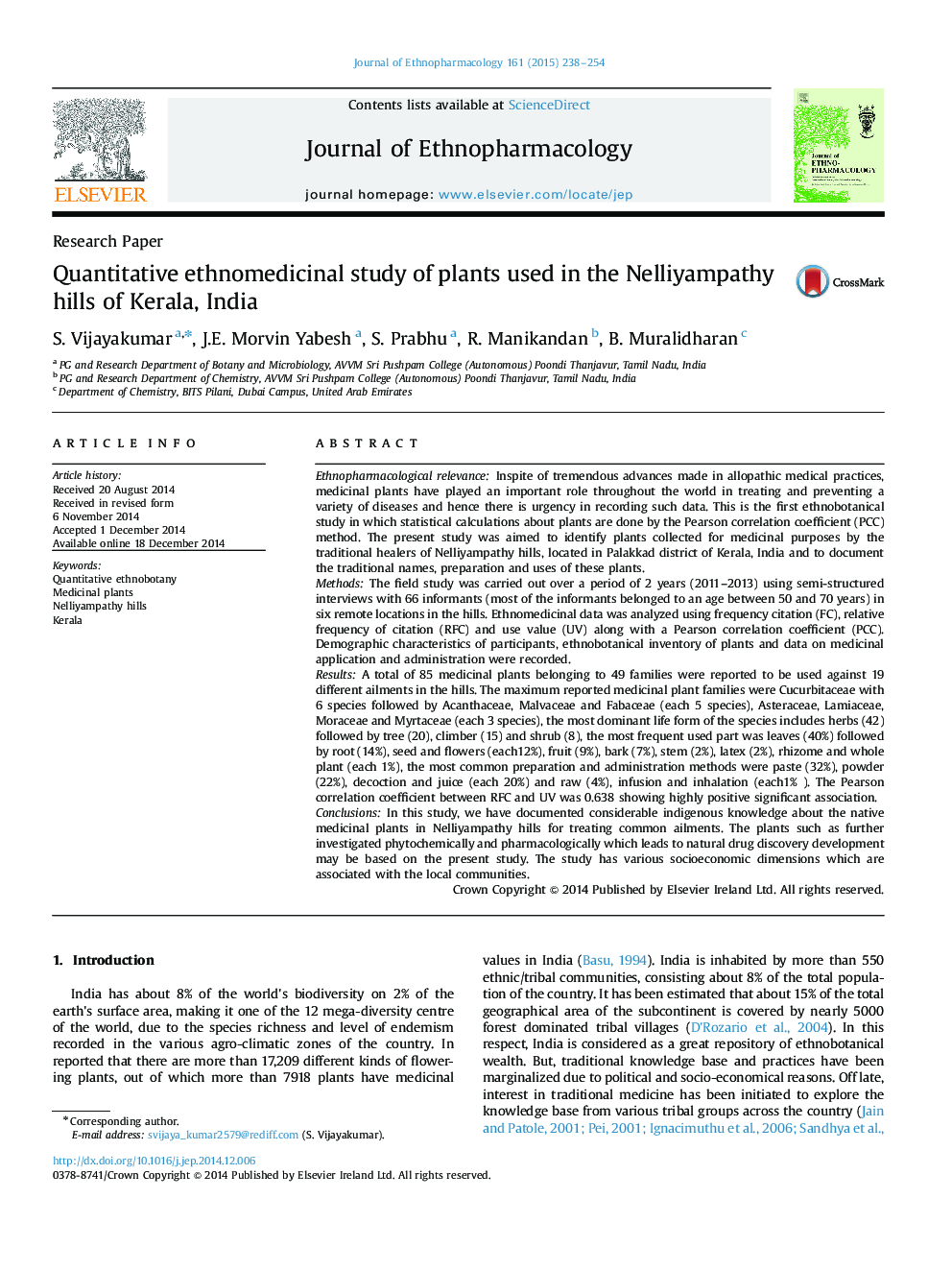| کد مقاله | کد نشریه | سال انتشار | مقاله انگلیسی | نسخه تمام متن |
|---|---|---|---|---|
| 5835582 | 1560401 | 2015 | 17 صفحه PDF | دانلود رایگان |
Ethnopharmacological relevanceInspite of tremendous advances made in allopathic medical practices, medicinal plants have played an important role throughout the world in treating and preventing a variety of diseases and hence there is urgency in recording such data. This is the first ethnobotanical study in which statistical calculations about plants are done by the Pearson correlation coefficient (PCC) method. The present study was aimed to identify plants collected for medicinal purposes by the traditional healers of Nelliyampathy hills, located in Palakkad district of Kerala, India and to document the traditional names, preparation and uses of these plants.MethodsThe field study was carried out over a period of 2 years (2011-2013) using semi-structured interviews with 66 informants (most of the informants belonged to an age between 50 and 70 years) in six remote locations in the hills. Ethnomedicinal data was analyzed using frequency citation (FC), relative frequency of citation (RFC) and use value (UV) along with a Pearson correlation coefficient (PCC). Demographic characteristics of participants, ethnobotanical inventory of plants and data on medicinal application and administration were recorded.ResultsA total of 85 medicinal plants belonging to 49 families were reported to be used against 19 different ailments in the hills. The maximum reported medicinal plant families were Cucurbitaceae with 6 species followed by Acanthaceae, Malvaceae and Fabaceae (each 5 species), Asteraceae, Lamiaceae, Moraceae and Myrtaceae (each 3 species), the most dominant life form of the species includes herbs (42) followed by tree (20), climber (15) and shrub (8), the most frequent used part was leaves (40%) followed by root (14%), seed and flowers (each12%), fruit (9%), bark (7%), stem (2%), latex (2%), rhizome and whole plant (each 1%), the most common preparation and administration methods were paste (32%), powder (22%), decoction and juice (each 20%) and raw (4%), infusion and inhalation (each1% ). The Pearson correlation coefficient between RFC and UV was 0.638 showing highly positive significant association.ConclusionsIn this study, we have documented considerable indigenous knowledge about the native medicinal plants in Nelliyampathy hills for treating common ailments. The plants such as further investigated phytochemically and pharmacologically which leads to natural drug discovery development may be based on the present study. The study has various socioeconomic dimensions which are associated with the local communities.
367
Journal: Journal of Ethnopharmacology - Volume 161, 23 February 2015, Pages 238-254
